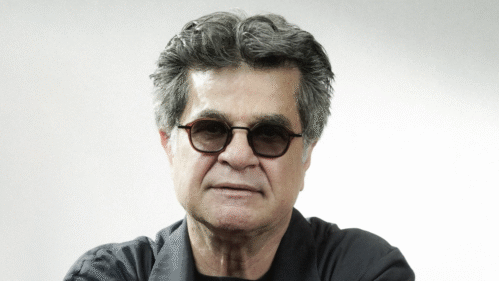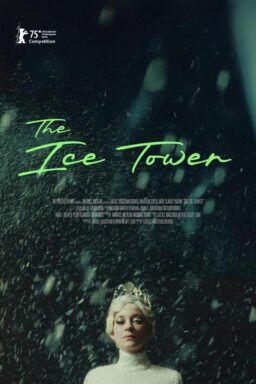BUDAPEST, HUNGARY – The last time I talked with Sylvester Stallone he thought he had it all clear in his mind about what should happen in “Rocky III,” the third and (he says) the last chapter in the saga of everybody’s favorite Philadelphia club fighter.
That would have been a year ago, in Philadelphia, at the world premiere of “Rocky II.” Looking ahead, Stallone anticipated a third film in which heavyweight champion Apollo Creed would retire after his loss to Rocky, and then become Rocky’s manager after the death of Mickey, the Burgess Meredith character. Rocky would decide to defend his title – and his opponent, naturally, would be another club fighter eager for a shot at the top. The film would end with the fight scene, just like the first two “Rockys,” except that this time the big fight would be on global TV from the Roman Coliseum.
But now here we were in Budapest, where Stallone was starring with Michael Caine in the new John Huston adventure, “Escape to Victory.” Stallone was sitting in the dust with his back against the wall of one of the buildings in the prison camp compound where the movie is set. He was thinking out loud about what should finally happen to Rocky Balboa.
“If I have the nerve, if I have real nerve, Rocky should die at the end of the third film. I was originally thinking in more grandiose terms – the Coliseum and everything – but ‘Rocky III’ should end with more than a fight. It should end with Rocky’s life coming full cycle, The way I imagine it, after the fight, he’s riding home in a cab, with the roar of the people chanting ‘Rocky!’ still in his ears. And he just drops over dead. “In other words, he has achieved everything possible and he dies when he’s on top. I don’t think people want to see Rocky when he’s 80. I don’t know if I’ll go with that ending, and him dying. But I know I’ll have to film it. I’ll have to shoot it for myself, whether or not I use it.”
Stallone talks about Rocky Balboa in those familiar terms, as if the character has become an extension of himself. He wrote the original screenplay, he played the role, and when he imagines chapters in Rocky’s life they seem to parallel the rise of his own acting career. In “Rocky II,” for example, the scenes with Rocky uncomfortably posing for TV commercials were suggested by the maelstrom of publicity that descended on Stallone after the success of “Rocky.”
Now Stallone is gearing up for the next Rocky film, which will be shot in 1981. In the years since “Rocky” won the Academy Award as the best picture of 1976, his pattern has been to alternate other roles with his autobiographical prizefighter. In 1978 there was “FIST,” with Stallone playing a Midwestern union organizer, and “Paradise Alley,” directed by Stallone and starring him as a denizen of New York’s Hell’s Kitchen.
Neither film was a hit at the box office. But in the summer of 1979 came “Rocky II,” an enormous critical and popular hit. Then Stallone made “Nighthawks,” starring as a New York cop on the trail of an international terrorist. It’s set for release later this year. And now he’s in Budapest making “Escape to Victory,” playing a goalie on a soccer team made up of POWs who are challenged to a game by the Nazis.
The track record of his non-Rocky films would seem to indicate that Stallone is successful only when he plays Rocky. But the rumored $1.8 million salary he’s getting for “Escape to Victory” indicates someone’s confidence in his drawing power at the box office. And Stallone got good personal reviews for his performances in “FIST” and “Paradise Alley.”
Of the two, the failure of “Paradise Alley” at the box office is the bigger disappointment for him, because he wrote and directed it as well as starring in it. It was a personal effort, based on memories of his own childhood in Hell’s Kitchen, and what made it interesting was Stallone’s off-the-wall humor in several bizarre scenes. My favorite had him lashing an organ grinder’s monkey to a water pipe so he could get some sleep.
Stallone blames himself for part of “Paradise Alley’s” poor reception: “I’ll never forgive myself for the way I allowed myself to be manipulated during the editing of that film,” he said. “There were a lot of scenes in there to give atmosphere and character, and they wanted them out just to speed things along. They removed 40 scenes, altogether. I put 10 of them back in for the version shown on TV. For example, the whole sequence of the soldier without legs, sitting on a bar eating peanuts.”
He thinks the Rocky movies were successful basically because they were so simple: “Most successful art reflects the exact ideas of the viewer – whether or not the viewer knows it, of course. Paintings that endure are paintings that inspire people to say, hey, that’s the way I feel; those are the colors I see in my dreams. Even abstract art depends on that. When you get right down to it, ‘Rocky’ said exactly the same things to a 5-year-old that it said to adults. There was nothing complicated about it.”
Stallone still doesn’t know if he’ll direct “Rocky III” himself. “It’s incredibly difficult to direct yourself in boxing scenes. You’re getting the crap beat out of you and trying to think about camera placement at the same time. And another thing, in ‘Rocky III’ the pace is going to have to be quickened. It shouldn’t be more than 90 minutes long. In the first two films, Rocky dictated his own pace. This time, like with any heavyweight champion, his pace is being dictated by the people around him. And we’ll have a lot of action and be conservative with the dialogue.
“And also I hope I get out in one piece. For ‘Rocky II,’ I got a torn pectoral muscle, I got all beat up inside, I had to have an operation to splice things back together. The mouthpiece saved my teeth. For this one, basically what I need is a mouthpiece for my whole body.”











